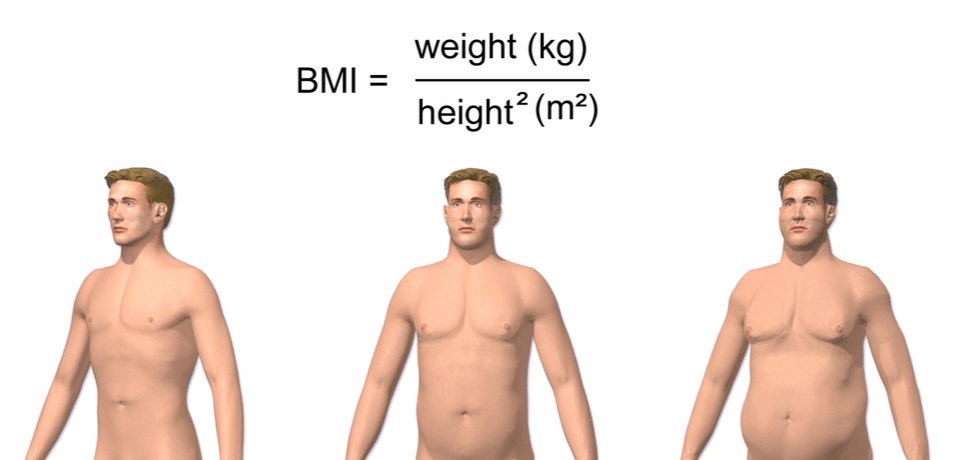Maybe It’s Time to Walk Out on Obesity
- Paramita Mandal, Rojina Yasmin, and Suvanjana Ghosh

- Oct 19, 2022
- 5 min read
Updated: Jun 29, 2023

Just a few decades ago, as the dual specters of food insecurity and associated malnutrition continued to haunt war-torn global populations, it was unimaginable that much of the world would soon face an obesity epidemic.
That time has now arrived: The World Health Organization (WHO) reports 1.6 billion overweight and obese people in the world, with about 40% or 650 million people in the heavier category.
This is a global problem, WHO says, noting that more people are obese than underweight in every region except sub-Saharan Africa and Asia.
Happily, there is a powerful remedy to unwanted weight gain that is also simple, free, and available to most: the habit of walking.
The Rise of Obesity
Today, having too much to eat—especially highly processed foods with little nutritional value—is rapidly overtaking food scarcity as a major contributor to malnutrition and poor health.
This modern version of malnutrition comes with its own, unique health impacts. Eating too many nutritionally poor foods has given rise to unhealthy weight gains that can lead to obesity and other chronic health conditions. Obesity has even been identified as a risk factor for COVID-19 mortality.
Obesity is more than just being overweight. WHO defines obesity as an abnormal or excessive fat accumulation in the human body that may pose a health risk for many chronic diseases and conditions.
How is obesity determined? Health professionals often use Body Mass Index (BMI) to screen for obesity. According to the US Centers for Disease Control and Prevention (CDC), BMI is a person’s weight in kilograms divided by the square of their height in meters. A person with a BMI of 30 or above is considered to be obese, while 25 to 30 is considered to be overweight.

Recent Aggravating Factors
The 2020 COVID-19 protocols contributed to the issue, as well. The stay-home and social distancing policies were intended to protect people from disease transmission. But the outcomes—requiring people to work from home, closing schools, restricting exercise outdoors or in gyms—led to an uptick in sedentary lifestyles, a major risk factor for weight gain.
When behaviors such as watching TV, indulging in sweet or salty snacks, and consuming sugary beverages—especially when not hungry—were added in, it can’t be a surprise that many people saw their body weights creep up. This is especially true in urban settings, WHO says.

Health Impacts of Obesity
Carrying extra fat can lead to serious health consequences, mainly heart disease, stroke, type 2 diabetes, osteoarthritis, and some types of cancers. Bone density and muscle mass may also deteriorate, causing osteosarcopenic obesity—marked by bone, muscle, and adipose tissue impairment—with higher risk of fractures and physical disability.
Obesity is also associated with serious health conditions like high blood pressure, higher levels of LDL (“the bad cholesterol”) and triglycerides, and lower levels of HDL (“the good cholesterol”).
An obese person is also prone to mental health conditions, such as depression or anxiety. Eating may become a pathway to coping with stress but, if not controlled, can cause weight gain.
Although there is some cultural pushback on “fat-shaming,” obese people can suffer stigmatization by society. Such experiences lower self-esteem and may discourage participation in activities of a positive nature, such as exercise and involvement in club activities.
There is, however, something that many can do to help in the treatment of obesity.
It’s called walking.
Benefits of Walking
It may seem simplistic to suggest daily walking as a protocol to address obesity, but as people spend more of their time sitting—at home, studying, working, or driving—it may be helpful to go over the benefits of standing up and moving around.
To begin with, walking improves blood pressure and can help lower BMI, thus lowering the risk of diabetes, cardiovascular disease, stroke, and more.
Brisk walking is a popular moderate-intensity, low-impact version of walking for those who want to avoid injuries—such as straining joints—associated with high-impact workouts. With just thirty minutes of brisk walking daily, one can burn about 150 more calories per day.
Studies have also shown that walking assists with fat-burning and can reduce waist circumferences of obese women.
Walks not only improve the physical health of an individual, but they are also beneficial for mental health. Studies have found that walking was an effective treatment for depression, anxiety, and psychological stress. It has also been shown that walking has a positive effect on self-esteem, and psychological well-being. Walking has also helped in maintaining the social health of individuals.

It's also best if walking is done outdoors—if possible and appropriate—especially in more natural settings, such as in a park or forest. Reconnecting with nature reduces stress, calms nerves and lowers blood pressure. It imparts a sense of peace and lifts one’s spirit.
Buddhist monks practice walking meditations, i.e., concentrating on the movement of the arms or legs while walking.
Walking in the Morning Impacts Health
There is something special about an early morning walk—for good reason. Walking in the morning, when the air is much cleaner and free from pollution, facilitates better metabolism and the burning of extra calories. Walking in the first hour of the sun’s rays also provides fresh vitamin D, which builds up bone strength, among other benefits. Starting the day with a morning walk enhances mood for the rest of the day.
Getting Started
Starting a new walking regimen isn’t always easy, but expect some good things to happen. When one starts walking, the body begins to release hormones, such as dopamine, serotonin, estrogen, and testosterone, that make a person feel better physically, mentally and emotionally. Thus, it can be said that a morning walk is the road to a better overall lifestyle.
It is wise for an obese person to start out with short walks with light intensity and gradually build up to longer walks or walks with more vigorous intensity. Extra weight demands extra strength for movement. Walkers should warm up for a few minutes before setting out; this is even true for those who are capable of walking briskly.
In addition, if individuals suffer from comorbidities, such as osteoarthritis and cardiovascular disease, these conditions need to be factored in. So, before taking up walking, it is important to consult a physician about duration, length, and other factors, and remember to stop and seek help if dizziness, palpitations, or breathing problems occur.

As part of a walking regimen, a person should learn to walk consciously, one step at a time. It’s good to set goals, both in exercise and diet. With the right support and professional guidance, stand up and start walking. It is one of the keys to a healthy life.
Finally, one way to help loved ones who seek to return to a normal weight is to take up morning walks with them. This will benefit both walkers and provide companionship, assistance, and motivation. Morning walks can help most everyone maintain a healthy lifestyle.
*Paramita Mandal is an Assistant Professor, Department of Zoology, The University of Burdwan, West Bengal, India, who has worked in the field of biomedical genetics for the last twelve years. Her research interests are complex disease genetics and cancer genomics. She has conducted independent research projects on human genetics and published her research in peer- reviewed journals.
Rojina Yasmin is a researcher, Department of Zoology, The University of Burdwan, West Bengal, India. Her research interests are in the area of complex human disease pathogenesis, and she studies how lifestyle factors impact disease.
Suvanjana Ghosh is a researcher, Department of Zoology, The University of Burdwan, West Bengal, India. Her research interests are in the area of cancer biology. She is passionate about examining the impacts of environmental factors on the pathogenesis of complex disorders.








The reminder of how walking can play a big role in reducing obesity really resonates with me. Building consistent movement into daily life is powerful, but I’ve also seen how adding a fun and engaging sport can make the process more sustainable. Pickleball has been that kind of activity for me — it combines cardio, agility, and social interaction in a way that makes staying active enjoyable rather than a chore. Having reliable gear helps keep the momentum going, and finding the Best pickleball store for paddles, balls, and accessories ensures that I’m always ready to step onto the court with energy and focus.
Walking helped me ease back into movement after struggling with weight and joint pain. But to really stick with it, I had to deal with the discomfort that came after each walk. Going to a pain management clinic changed everything for me. They didn’t just mask the pain—they actually helped me get ahead of it. Once that barrier was out of the way, I could walk longer, more often, and actually enjoy the process without feeling like I was fighting my own body every step.